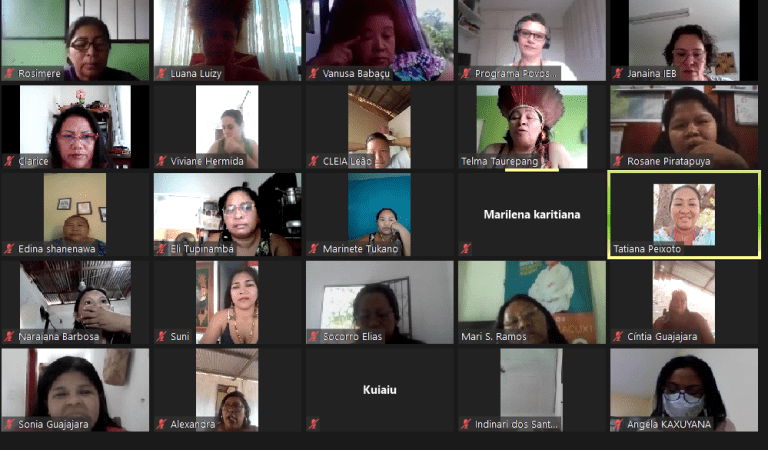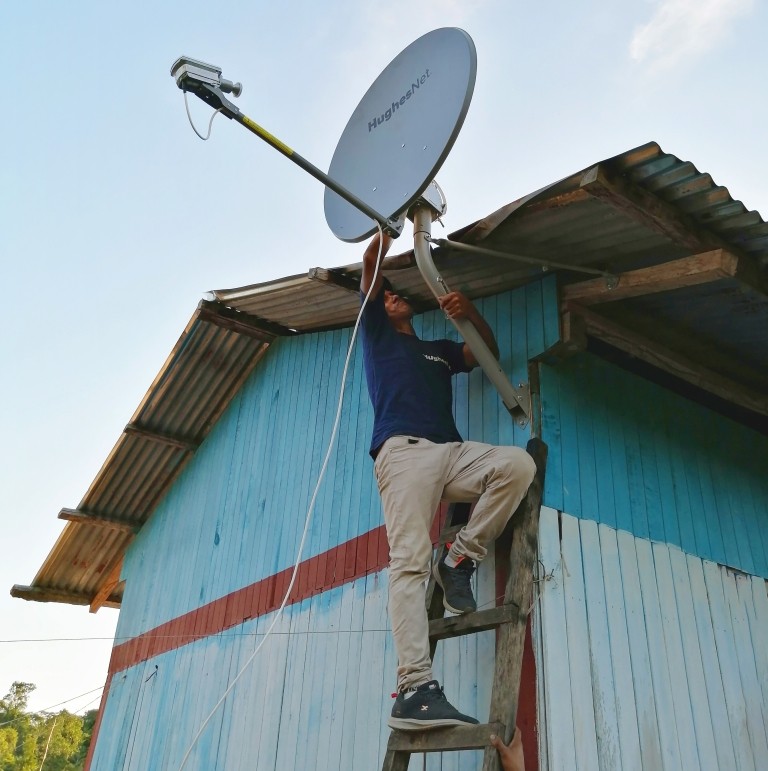Feature
“Virtual touches”: Five ways technology is helping indigenous organizations mobilize in the Amazon

Like many other indigenous leaders in the time of Covid-19, Telma Taurepang, coordinator of the Union of Indigenous Women of the Brazilian Amazon (UMIAB), sees the virtual world as the best way to mobilize and stay in touch – and sometimes the only way. Being able to “see” each other is for some indigenous women the touch they need to keep struggling together for their rights.
In the indigenous context, speaking out loud is the reason why touches are so important. They raise the voices of those whose rights are not being met; they mobilize thoughts, feelings and demands. This is why virtual touches have become crucial to rights advocacy.
In this context, indigenous peoples organizations in Brazil and Peru, through the USAID-funded Strengthening the Capacities of Indigenous Organizations in the Amazon (SCIOA) project, have prioritized gaining access to the virtual world within the capacity development process they started in 2019. They have acquired equipment to get or improve their connectivity, as well as taken training sessions to diagnose their digital abilities and to learn to use key digital tools such as Zoom, email and institutional and bank platforms.
For them to have fluid conversations, virtual contact has become more important than ever. These organizations have shown that with virtual touches, joint work, visibility, pertinence, knowledge flow and innovation are possible and necessary to continue to advocate for their rights. Learn how virtual touches have helped them to mobilize.
“Through computers, we talk and define the criteria to raise the demands of anyone whose rights are not being fulfilled. We seek ways for women to become the very protagonists of their stories.” —Telma Taurepang

Virtual touch #1: Work side-by-side to be heard
“Without partners we are nothing,” said Clarisse Silva from UMIAB, the Brazilian organizations that worked hard to connect its headquarters across each of the nine Brazilian Amazonian states. Having improved their infrastructure and showing a great resilience and capacity to mobilize, by the end of 2020, UMIAB women managed to come together virtually for a General Assembly to elect the organization's new board.
They know that networks (social capital) are the key to joint work, and necessary to be heard in institutional and governmental spaces.
Virtual touch #2: Poke to be seen
The Federation of Native Border Communities of Putumayo (FECONAFROPU), in Peru, has been documenting illegal uses of their territories to raise complains before the relevant authorities. Tools such as mobile phone GPS and cameras aid their efforts, as complaints can be made much faster and more easily documented.
Being able to reach different audiences, as much as institutions, gives them more visibility whenever abuses against communities or territories are taking place.
Virtual touch #3: Touch on time
In Brazil, the Organization of Indigenous Peoples of the Alto Madeira (OPIAM) helped to establish the Humaitá Covid-19 Crisis Committee. Through their communications infrastructure equipment, OPIAM’s representatives were able to contribute to the Crisis Committee’s efforts led by the Federal Agency of Indigenous Affairs (FUNAI) and the Special Secretariat for Indigenous Health (SESAI), in coordinating the safe delivery of food, medicine and safety equipment to indigenous communities along the Alto Madeira River.
Just as with FECONAFROPU’s complaints, quick timing was the key to success. Pertinence is a third benefit that comes with improved connectivity.
Virtual touch #4: Share to be touched
“We are confident that this internet will make education better for our students. It is important for us because they will be the leaders in the future,” said the leader of the Tahuantisuyo community, currently represented by the Unión of Asháninka and Yanesha communities (UNAY), one of the Peruvian indigenous peoples organizations working with SCIOA.
Being connected allows organizations and communities to better access training in various subjects. It also makes possible exchanging experiences around day-to-day life of more specialized topics. This means knowledge flow between communities’ members and rural and urban contexts can more easily take place.
Virtual touch #5: Touch to thrive
The Indigenous Council of Roraima (CIR) in Brazil learned they had to attract youth, as they are a fundamental part of their sustainability. Since they are more familiar with technology, they created a Youth and Sustainability Committee within their organization.
This link between youth and sustainability, plus improved connectivity infrastructure, allows for innovation – not in terms of adapting to occidental ways, but in terms of being, again, more pertinent when interacting with institutions and external communities to advocate for their rights through new means of communication.